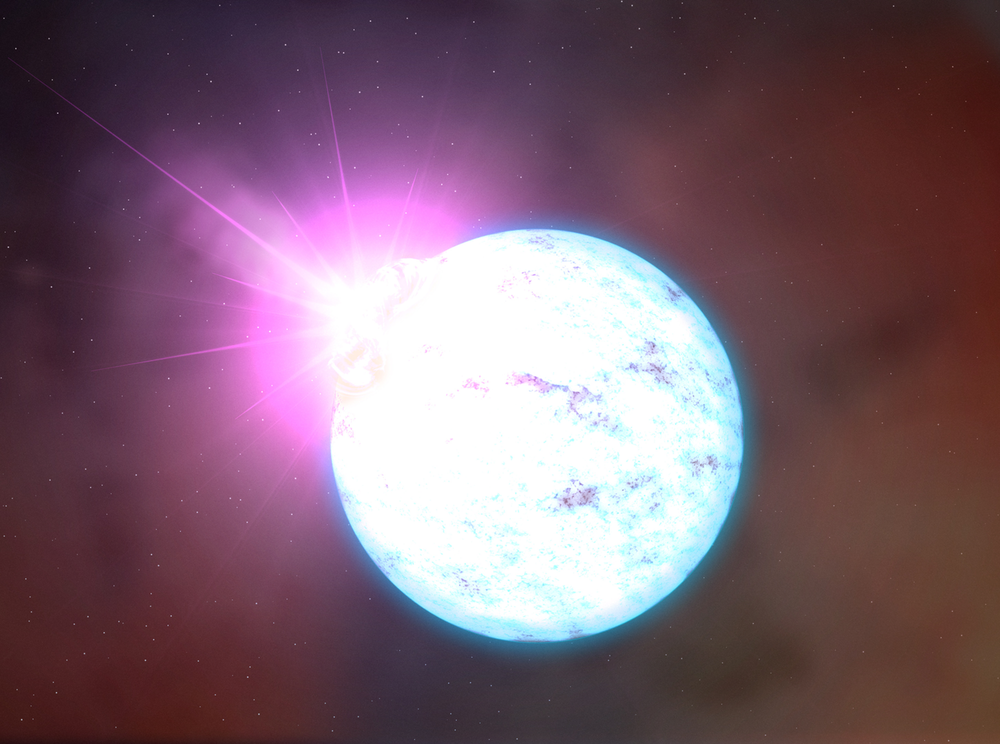Rethink Needed for Neutron Star Crust Structure
The crust of a neutron star makes up only a fraction of the star’s mass, but it significantly influences phenomena such as the cooling rate and the production of dramatic gamma-ray flashes. Publishing in Physical Review Letters, a pair of theorists has found that the structure that astrophysicists have assumed for decades is unstable. If the results are correct, theorists will need to recalculate many of the basic properties of neutron stars. There is also a chance that these objects are a stronger source of potentially detectable gravitational radiation than anyone previously expected.
A neutron star forms when the core of a giant star collapses in a supernova, leaving a sphere about 20 kilometers in diameter, with a mass greater than that of the sun. The microscopic structure of the outer crust is a lattice of neutron-rich nuclei surrounded by a uniform gas of electrons. As you move toward the star’s center, the increasing pressure fuses more and more electrons and protons into neutrons, increasing the neutron density in the nuclei. Eventually, in the inner crust, the nuclei cannot accept any more neutrons, and free neutrons form a superfluid that permeates the lattice.
Deformations and cracks in the crusts of neutron stars have been linked with phenomena such as gravitational waves, bursts of gamma rays, and “glitches”—events where a star’s spin suddenly speeds up. The inner crust’s structure is key to understanding these events.
Theorists have examined many aspects of the inner crust, for example, analyzing vibrations of the lattice. “This matter has been studied since the 1970s,” says Dmitry Kobyakov of Umeå University in Sweden. The structure of the inner crust has been modeled as a lattice in a so-called body-centered-cubic (bcc) formation—each cubic unit of the crystal has nuclei at the center and at its eight corners—with an electron gas circulating throughout the structure. But the free neutrons were thought to have little effect.
In their new model, Kobyakov and Christopher Pethick of the University of Copenhagen and NORDITA in Stockholm have accounted for the interactions between the free neutrons and the lattice. They found that the neutrons are somewhat analogous to an additional component in a metallic alloy and that they lead to an effective attraction between nuclei. This attraction turned out to have dramatic effects on the crust’s response to short-wavelength lattice vibrations.
The lattice constantly jiggles with vibrations having a wide range of wavelengths. For wavelengths shorter than about 2 to 5 times the lattice spacing, the team found that the system is unstable—a lack of rigidity causes vibrations to grow steadily in size. The instability implies that the usual assumption of the bcc crystalline arrangement of nuclei is incorrect, says Kobyakov.
“A lot of our models might need to be modified and quite possibly even thrown out,” says Edward Brown, an astrophysicist at Michigan State University in East Lansing. “If the lattice structure is different, then a lot of properties need to be recalculated. There’s potentially a lot of rich physics.”
The structure of the inner crust affects the crust’s strength and rigidity, which can have major implications for a star’s behavior. For example, if the crust of a neutron star is sufficiently strong, it can support mountain-like structures on its surface. As it spins—neutron stars can twirl more than 600 times per second—these mountains create ripples in spacetime known as gravitational waves, which may be detectable by the Laser Interferometer Gravitational-Wave Observatory (LIGO), the facility attempting to make the first direct detections of these waves. “The crust could be much more rigid than we thought and could support a much larger mountain, in which case these are a much more interesting target for LIGO,” says Brown.
Such a rigidity increase would also influence earthquake-like ruptures in the crust that may be related to the bursts of gamma rays observed from magnetars (highly magnetic neutron stars). Researchers studying these and other phenomena may need to look closely at the new results, says Brown. “It could change things a lot, or it could end up modifying things just a little bit.”
–Sophie Bushwick
Sophie Bushwick is a freelance science writer in New York City.





